Staining Leather
If you saw last week’s column, you know I have been restoring a Gustav Stickley ladder back chair which had been hanging from the rafters in my barn, awaiting a trip up the hill to my workshop. Last week I cut, stretched, and tacked a leather hide to the framework of the seat, then gave the wet leather a few days to dry. Now that it is dry and taunt, I’m ready to color the natural hide.
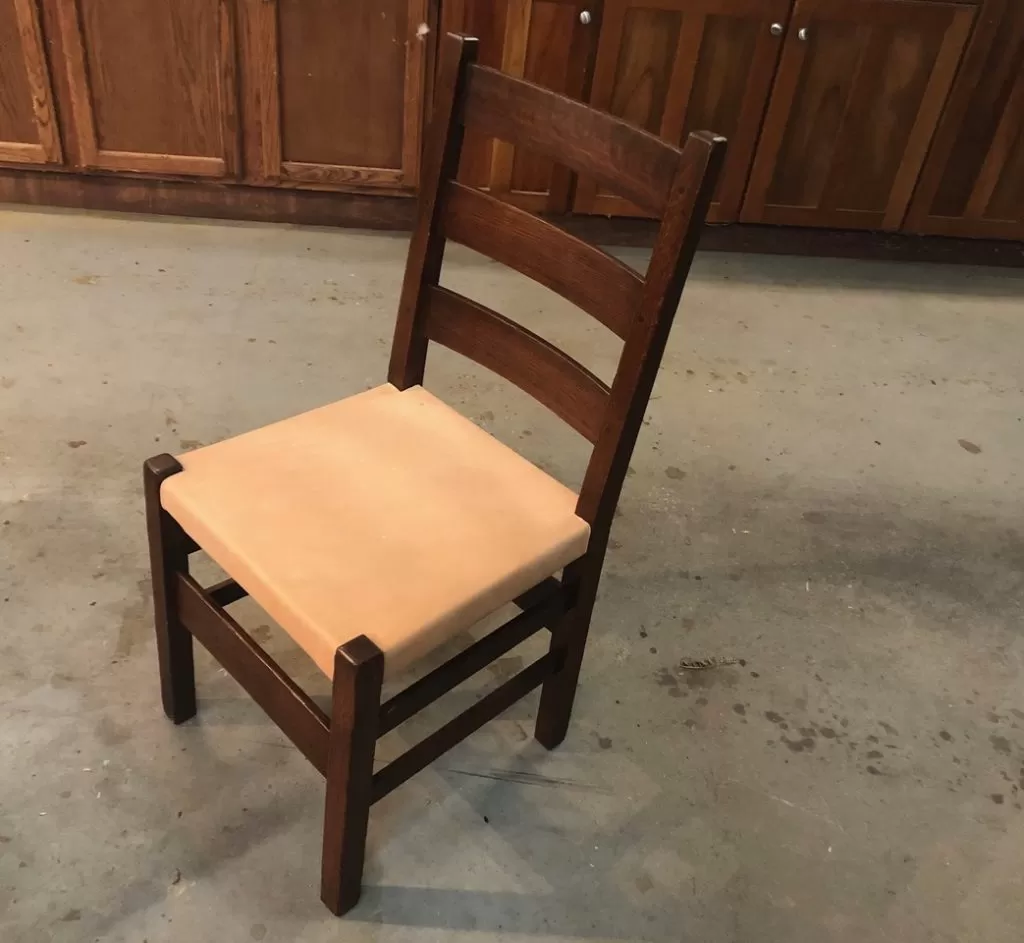
I could have used a leather dye, but I am also accustomed to using oil-based wood stains, which also contain dyes. First, though, I cut my scraps up into smaller pieces which I test colored using a variety of stains, making sure I labeled the back of each for future reference.
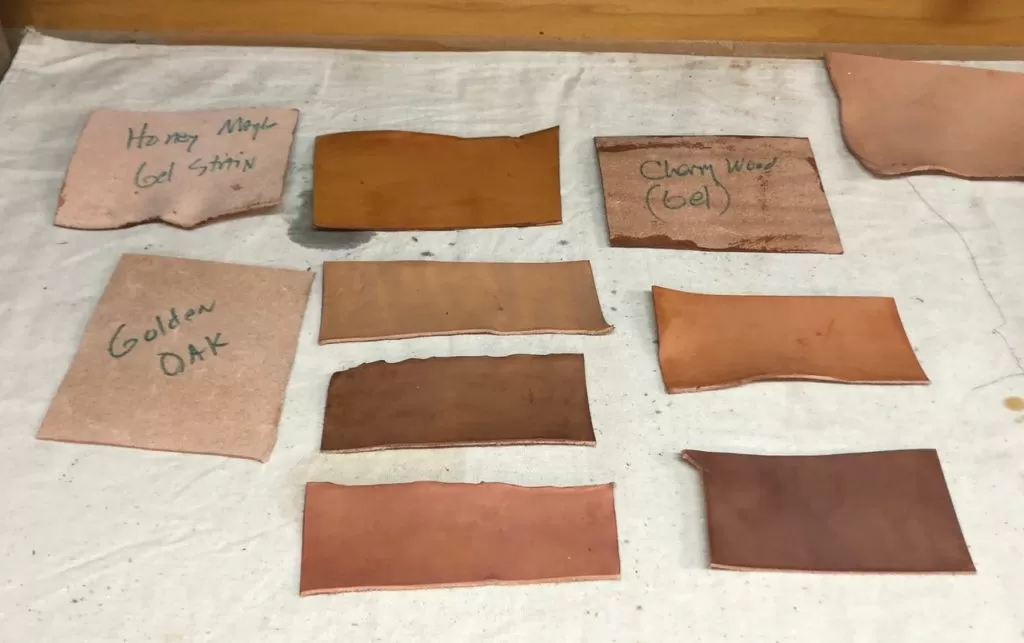
Once I found the color (Minwax “Red Mahogany”) I felt came the closest to looking like a hundred-year-old Stickley leather seat, I applied a liberal amount of stain to the seat. As you will discover on your scraps, unsealed leather absorbs more stain than most boards, so apply plenty.
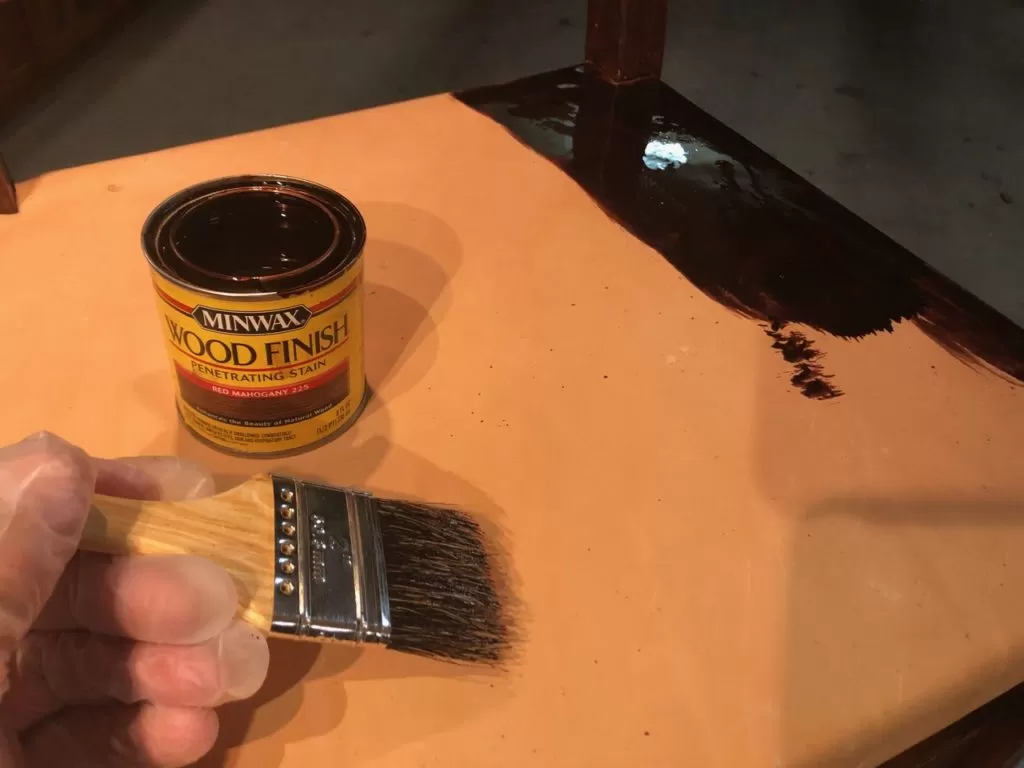
You will also find that stain starts to dry faster on leather than wood, so don’t walk away. As soon as it starts to set up, use a clean, soft cloth to remove the excess stain from the leather, wiping in the same direction as the grain. Afterwards set the chair aside and let the stain dry overnight.
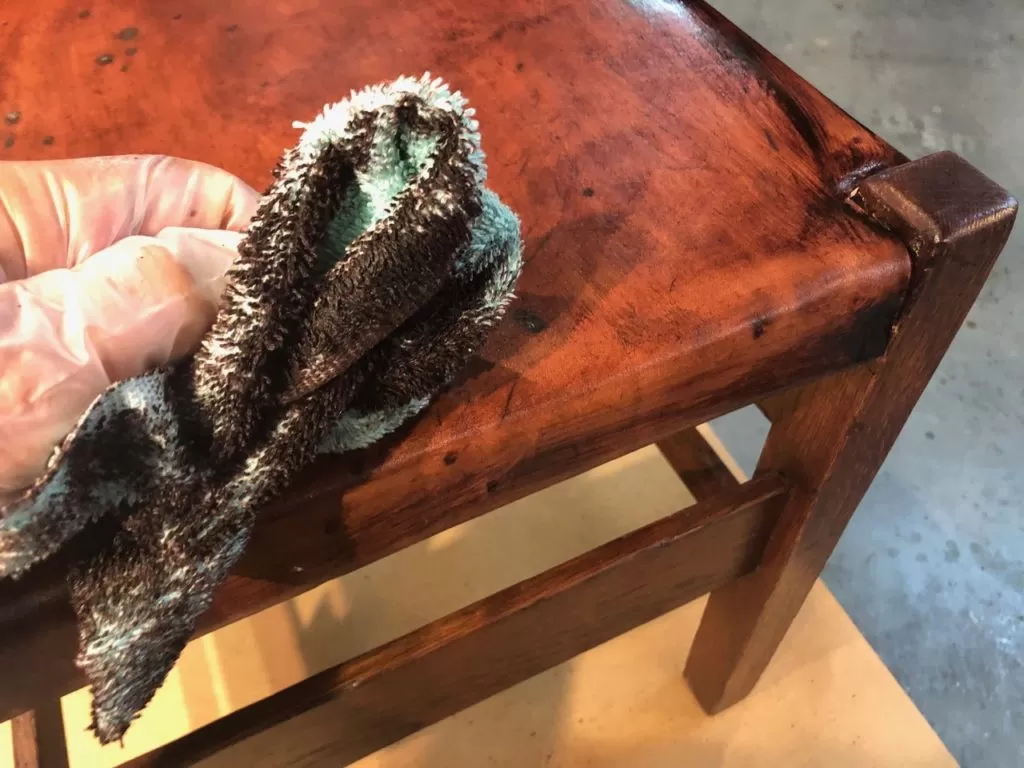
Note: If you are accustomed to the near-perfect grain of synthetic leather upholstery, prepare yourself for the natural flaws in the hide that the dye or stain will highlight. Rest assured, they also appeared in the natural hides in original Arts and Crafts furniture, and will make a new leather seat look far more appropriate on a hundred-year-old chair than fake leather.

When I bought this chair, it had a modern, non-leather seat covering, but the upholsterer had saved and reused the original pyramid tacks. Fortunately, I had also saved them, so I was able to drill a small pilot hole for each tack before tapping it in with a lightweight hammer.

Once the stain was dry and the tacks in place, I sealed the porous leather with a coat of Minwax Dark Paste Wax. After five minutes I took a clean, soft cloth and buffed the paste wax up to a hard, protective sheen.
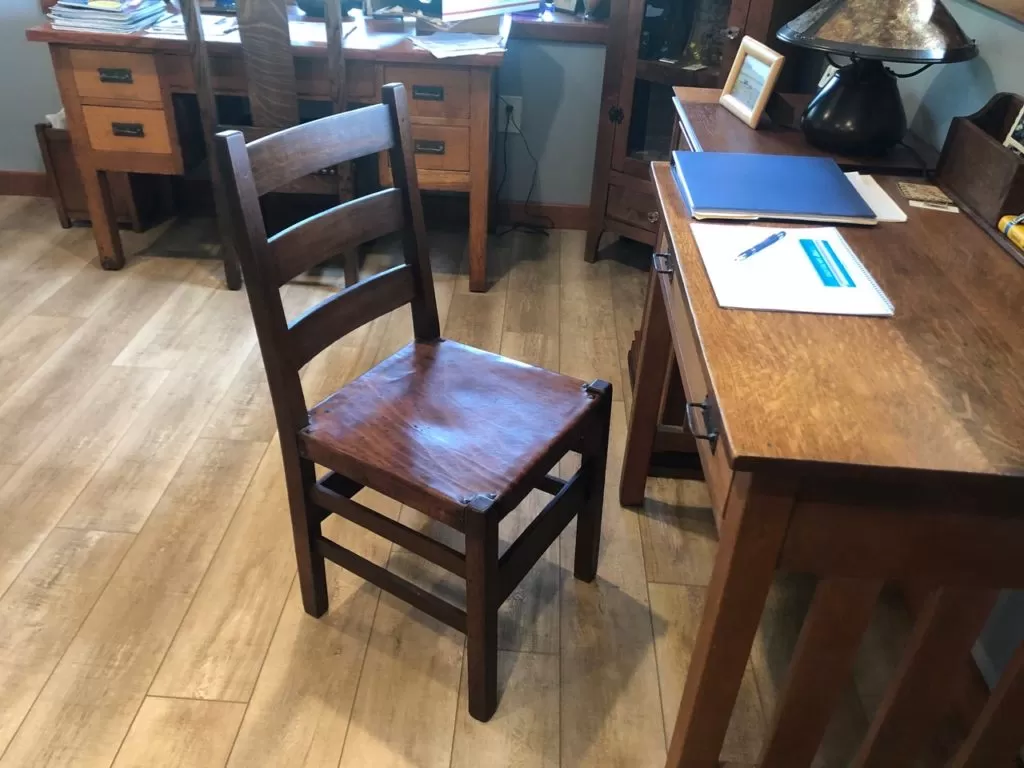
Now, after patiently waiting, this modest side chair is now back at work in my wife’s office.
And I’m looking for my next project ……
Until next week,
“Amateurs only focus on successful projects; professionals study failures.” – Larrie Ferreiro, architect
“It does not take much strength to do things, but it requires a great deal of strength to decide what to do.” ― Elbert Hubbard
Bruce
